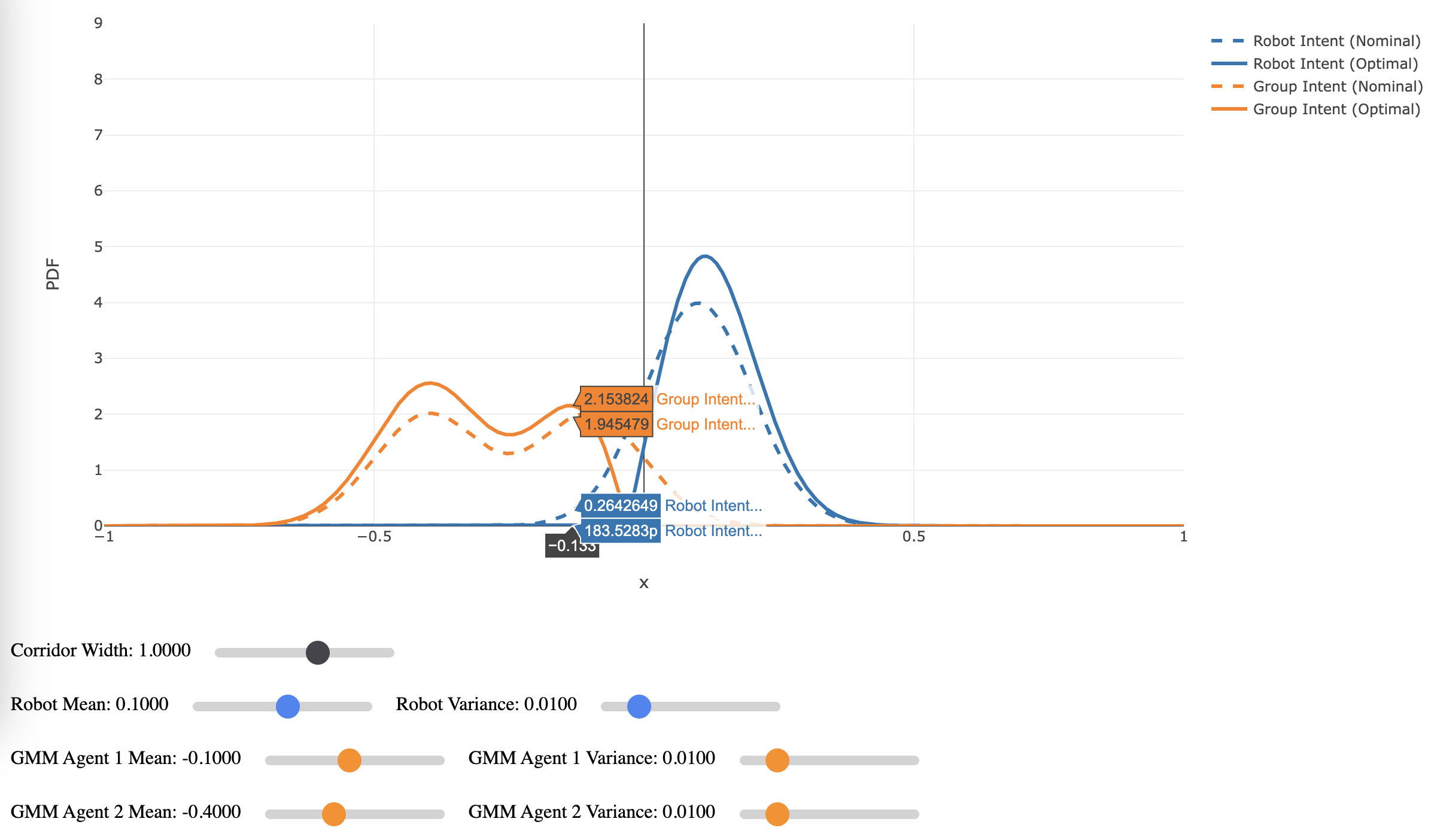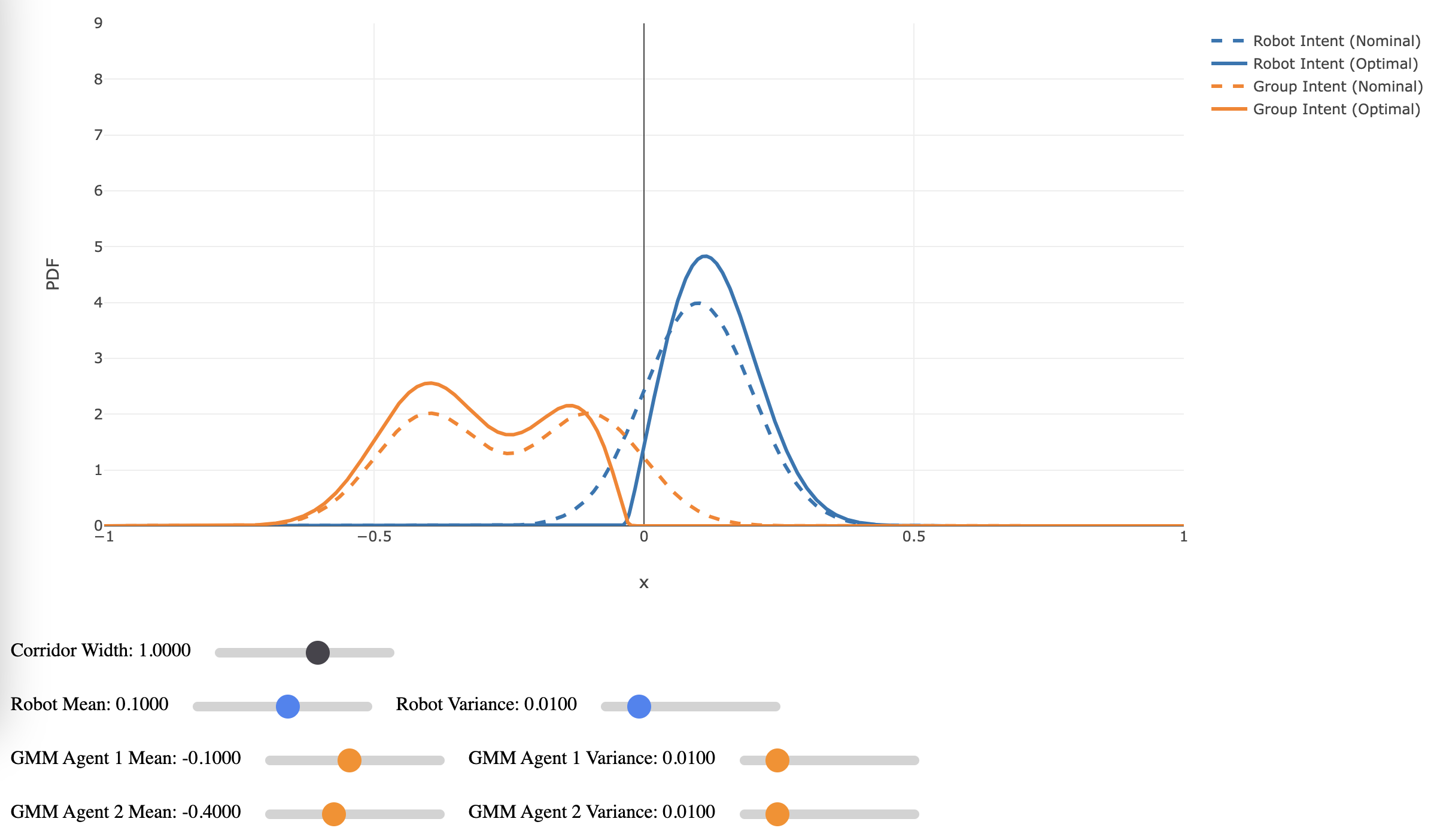This repository contains related code for the RSS 2021 paper "Move Beyond Trajectories: Distribution Space Coupling for Crowd Navigation" by Muchen Sun, Francesca Baldini, Pete Trautman and Todd Murphey.
If you use this toolbox, please cite it as below.
@INPROCEEDINGS{SunM-RSS-21,
AUTHOR = {Muchen Sun AND Francesca Baldini AND Peter Trautman AND Todd Murphey},
TITLE = {{Move Beyond Trajectories: Distribution Space Coupling for Crowd Navigation}},
BOOKTITLE = {Proceedings of Robotics: Science and Systems},
YEAR = {2021},
ADDRESS = {Virtual},
MONTH = {July},
DOI = {10.15607/RSS.2021.XVII.053}
}
You can play around with DistNav for a one-dimensional demonstration at below (click the image to visit the website).
You can install the crowd navigaton toolbox via pip install distnav. The second tutorial below contains examples for how to use this toolbox.
We provide a Jupyter notebook tutorials for our algorithm. You can find them under the "notebooks" directory.
- Tutorial 1: distribution space coupling in one-dimensional space: In the first tutorial, we will build from scratch on a one-dimensional two-agents toy example to show how DistNav optimization works. We will show both the analytical solution with numerical integration and approximated solution with sampling and Monte-Carlo integration, and how they can match with each other. You can find a copy of the notebook in Google Colaboratory here.
- Tutorial 2: distribution space coupling in high-dimensional space using
distnavtoolbox: In the second tutorial, we will do distribution space coupling in high-dimensional spaces, to predict the preference distributions over long trajectories for four pedestrians (or robots) walk across each other. We show how to specify initial preference distributions using Gaussian processes regression and how to use ourdistnavtoolbox to find optimal preferences via samples. You can find a copy of the notebook in Google Colaboratory here.
Feel free to contact Muchen Sun via muchen@u.northwestern.edu for any question :)

